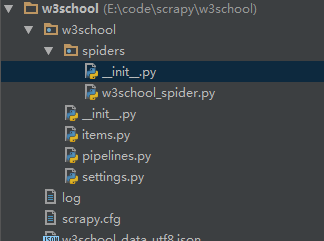爬虫总结
一开始接触用python 写爬虫用的是bs4 request urllib2 这些库,简单爬取网页简直不要太简单
类似这种:
# -*- coding: utf-8 -*- #--------------------------------------- # 程序:百度贴吧爬虫 # 版本:0.1 # 作者:why # 日期:2013-05-14 # 语言:Python 2.7 # 操作:输入带分页的地址,去掉最后面的数字,设置一下起始页数和终点页数。 # 功能:下载对应页码内的所有页面并存储为html文件。 #--------------------------------------- import string, urllib2 #定义百度函数 def baidu_tieba(url,begin_page,end_page): for i in range(begin_page, end_page+1): sName = string.zfill(i,5) + '.html'#自动填充成六位的文件名 print u'正在下载第' + str(i) + u'个网页,并将其存储为' + sName + '......' f = open(sName,'w+') m = urllib2.urlopen(url + str(i)).read() f.write(m) f.close() #-------- 在这里输入参数 ------------------ print u"""#--------------------------------------- # 程序:百度贴吧爬虫 # 版本:0.1 # 作者:why # 日期:2013-05-14 # 语言:Python 2.7 # 操作:输入带分页的地址,去掉最后面的数字,设置一下起始页数和终点页数。 # 功能:下载对应页码内的所有页面并存储为html文件。 #--------------------------------------- """ # 这个是山东大学的百度贴吧中某一个帖子的地址 #bdurl = 'http://tieba.baidu.com/p/2296017831?pn=' #iPostBegin = 1 #iPostEnd = 10 print u'例如:http://tieba.baidu.com/p/2296017831?pn=' print u'请输入贴吧的地址,去掉pn=后面的数字:' bdurl = str(raw_input(u' ')) print u'请输入开始的页数:' begin_page = int(raw_input(u' ')) print u'请输入终点的页数:' end_page = int(raw_input(u' ')) #-------- 在这里输入参数 ------------------ #调用 baidu_tieba(bdurl,begin_page,end_page)
自己在上家写的那些找不到了,逻辑是 Python 爬虫脚本 爬取解析网页,提取有效字段,整理写入csv文件供市场部门使用
----------------------------------------------------------------------------------------------------------------------------------------------------------------------------------------------------
Scrapy爬虫框架:
安装:
入门使用:
新建工程:
scrapy startproject tutorial
建好的工程目录用IDE打开(这里我用的是pycharm)

- scrapy.cfg: 项目配置文件
- items.py: 项目items文件,Items是将要装载抓取的数据的容器,它工作方式像python里面的字典
- pipelines.py: 项目管道文件
- settings.py: 项目配置文件
- spiders: 放置spider的目录
代码:
##items
# -*- coding: utf-8 -*-
# Define here the models for your scraped items
#
# See documentation in:
# http://doc.scrapy.org/en/latest/topics/items.html
import scrapy
class W3SchoolItem(scrapy.Item):
# define the fields for your item here like:
# name = scrapy.Field()
title = scrapy.Field()
link = scrapy.Field()
desc = scrapy.Field()
#################################
##pipelines.py
# -*- coding: utf-8 -*-
# Define your item pipelines here
#
# Don't forget to add your pipeline to the ITEM_PIPELINES setting
# See: http://doc.scrapy.org/en/latest/topics/item-pipeline.html
import json
import codecs
class W3SchoolPipeline(object):
def __init__(self):
self.file = codecs.open('w3school_data_utf8.json','wb',encoding='utf-8')
def process_item(self, item, spider):
line = json.dumps(dict(item)) + '\n'
self.file.write(line.decode("unicode_escape"))
return ite
###############################################
##settings.py
# -*- coding: utf-8 -*-
# Scrapy settings for w3school project
#
# For simplicity, this file contains only settings considered important or
# commonly used. You can find more settings consulting the documentation:
#
# http://doc.scrapy.org/en/latest/topics/settings.html
# http://scrapy.readthedocs.org/en/latest/topics/downloader-middleware.html
# http://scrapy.readthedocs.org/en/latest/topics/spider-middleware.html
BOT_NAME = 'w3school'
SPIDER_MODULES = ['w3school.spiders']
NEWSPIDER_MODULE = 'w3school.spiders'
# Crawl responsibly by identifying yourself (and your website) on the user-agent
#USER_AGENT = 'w3school (+http://www.yourdomain.com)'
# Configure maximum concurrent requests performed by Scrapy (default: 16)
#CONCURRENT_REQUESTS=32
# Configure a delay for requests for the same website (default: 0)
# See http://scrapy.readthedocs.org/en/latest/topics/settings.html#download-delay
# See also autothrottle settings and docs
#DOWNLOAD_DELAY=3
# The download delay setting will honor only one of:
#CONCURRENT_REQUESTS_PER_DOMAIN=16
#CONCURRENT_REQUESTS_PER_IP=16
# Disable cookies (enabled by default)
#COOKIES_ENABLED=False
# Disable Telnet Console (enabled by default)
#TELNETCONSOLE_ENABLED=False
# Override the default request headers:
#DEFAULT_REQUEST_HEADERS = {
# 'Accept': 'text/html,application/xhtml+xml,application/xml;q=0.9,*/*;q=0.8',
# 'Accept-Language': 'en',
#}
# Enable or disable spider middlewares
# See http://scrapy.readthedocs.org/en/latest/topics/spider-middleware.html
#SPIDER_MIDDLEWARES = {
# 'w3school.middlewares.MyCustomSpiderMiddleware': 543,
#}
# Enable or disable downloader middlewares
# See http://scrapy.readthedocs.org/en/latest/topics/downloader-middleware.html
#DOWNLOADER_MIDDLEWARES = {
# 'w3school.middlewares.MyCustomDownloaderMiddleware': 543,
#}
# Enable or disable extensions
# See http://scrapy.readthedocs.org/en/latest/topics/extensions.html
#EXTENSIONS = {
# 'scrapy.telnet.TelnetConsole': None,
#}
# Configure item pipelines
# See http://scrapy.readthedocs.org/en/latest/topics/item-pipeline.html
ITEM_PIPELINES = {
'w3school.pipelines.W3SchoolPipeline': 300,
}
# Enable and configure the AutoThrottle extension (disabled by default)
# See http://doc.scrapy.org/en/latest/topics/autothrottle.html
# NOTE: AutoThrottle will honour the standard settings for concurrency and delay
#AUTOTHROTTLE_ENABLED=True
# The initial download delay
#AUTOTHROTTLE_START_DELAY=5
# The maximum download delay to be set in case of high latencies
#AUTOTHROTTLE_MAX_DELAY=60
# Enable showing throttling stats for every response received:
#AUTOTHROTTLE_DEBUG=False
# Enable and configure HTTP caching (disabled by default)
# See http://scrapy.readthedocs.org/en/latest/topics/downloader-middleware.html#httpcache-middleware-settings
#HTTPCACHE_ENABLED=True
#HTTPCACHE_EXPIRATION_SECS=0
#HTTPCACHE_DIR='httpcache'
#HTTPCACHE_IGNORE_HTTP_CODES=[]
#HTTPCACHE_STORAGE='scrapy.extensions.httpcache.FilesystemCacheStorage'
###############################################
##w3school_spider.py
from scrapy.selector import Selector
from scrapy import Spider
from w3school.items import W3SchoolItem
class W3schoolSpider(Spider):
name = "w3school"
allowed_domains = ["localhost"]
start_urls = ["http://127.0.0.1:8080/myregister.html"]
def parse(self, response):
sel = Selector(response)
sites = sel.xpath('//div[@id="navsecond"]/div[@id="course"]/ul[1]/li')
items = []
for site in sites:
item = W3SchoolItem()
title = site.xpath('a/text()').extract()
link = site.xpath('a/@href').extract()
desc = site.xpath('a/@title').extract()
item['title'] = [t.encode('utf-8') for t in title]
item['link'] = [l.encode('utf-8') for l in link]
item['desc'] = [d.encode('utf-8') for d in desc]
items.append(item)
#log.msg("Appending item...",level='INFO')
#log.msg("Append done.",level='INFO')
return items
其中有使用XPATH解析,跟XML很像,不太熟悉的话可以去W3school学习下
参考:
知乎:http://www.zhihu.com/question/20899988
scapy:http://www.cnblogs.com/txw1958/archive/2012/07/16/scrapy-tutorial.html



